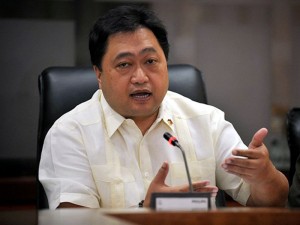PH takes measured steps toward ‘open skies’
The Philippines wants to soon be part of the group of Southeast Asian nations that have opened up their capital cities to more foreign airlines as the region’s second-most populated country tries to better integrate with its neighbors.
At the World Economic Forum (WEF) on East Asia on Thursday, AirAsia chair Tony Fernandes called on hold-outs like the Philippines to sign the Association of Southeast Asian Nations (Asean) multilateral open skies deal.
Finance Secretary Cesar V. Purisima said the government was willing to open up Manila to more intra-Asean traffic. The problem, however, is Manila’s readiness.
“The challenge in Manila is congestion,” Purisima said. “We need to fix our infrastructure bottlenecks,” he added.
Purisima noted that the Philippines already has a “pocket open skies” policy in place, which opened up all airports in the country to more foreign traffic except for Manila.
Manila’s Ninoy Aquino International Airport (Naia), which is made up of two perpendicular runways and four disconnected terminals, has been repeatedly cited as one of the world’s worst major airports.
Decongesting Manila, which is the country’s main international gateway, will be key to the government’s goal of tripling tourist arrivals to 10 million by 2016 from about 3 million in 2010.
Earlier this month, San Miguel Corp. (SMC) submitted a proposal for the construction of a new $10-billion airport to replace existing facilities in Manila. The new airport will increase Manila’s capacity to take flights by five-fold.
For his part, AirAsia’s Fernandes, one of the main crusaders for “open skies” in the region, called on countries like the Philippines to address barriers to the liberalization of the aviation industry.
He said while some countries have signed the Asean’s “open skies” deal, many of them still have hidden barriers.
Meanwhile, the Philippine operations of AirAsia is targeting to stem losses by 2015 with early indicators pointing to improving ticket sales as the carrier expands routes, Fernandes said.
He told reporters “there was a chance” for AirAsia Zest to post a profit next year also as they anticipate the airline’s takeover, now pending with the Philippine Senate.
AirAsia Zest is still controlled by Filipino businessman Alfredo Yao, who said he was open to selling his interests. The rest of the budget carrier held by AirAsia’s local unit.
“We have had a few false starts but third quarter and fourth quarter sales have been very good, load factor for domestic is very high,” Fernandes said.
Given high congestion, he said the strategy would involve opening up new markets outside Metro Manila while growing its presence in the region, where Fernandes said his group had an advantage compared with domestic rivals Philippine Airlines and Cebu Pacific.

